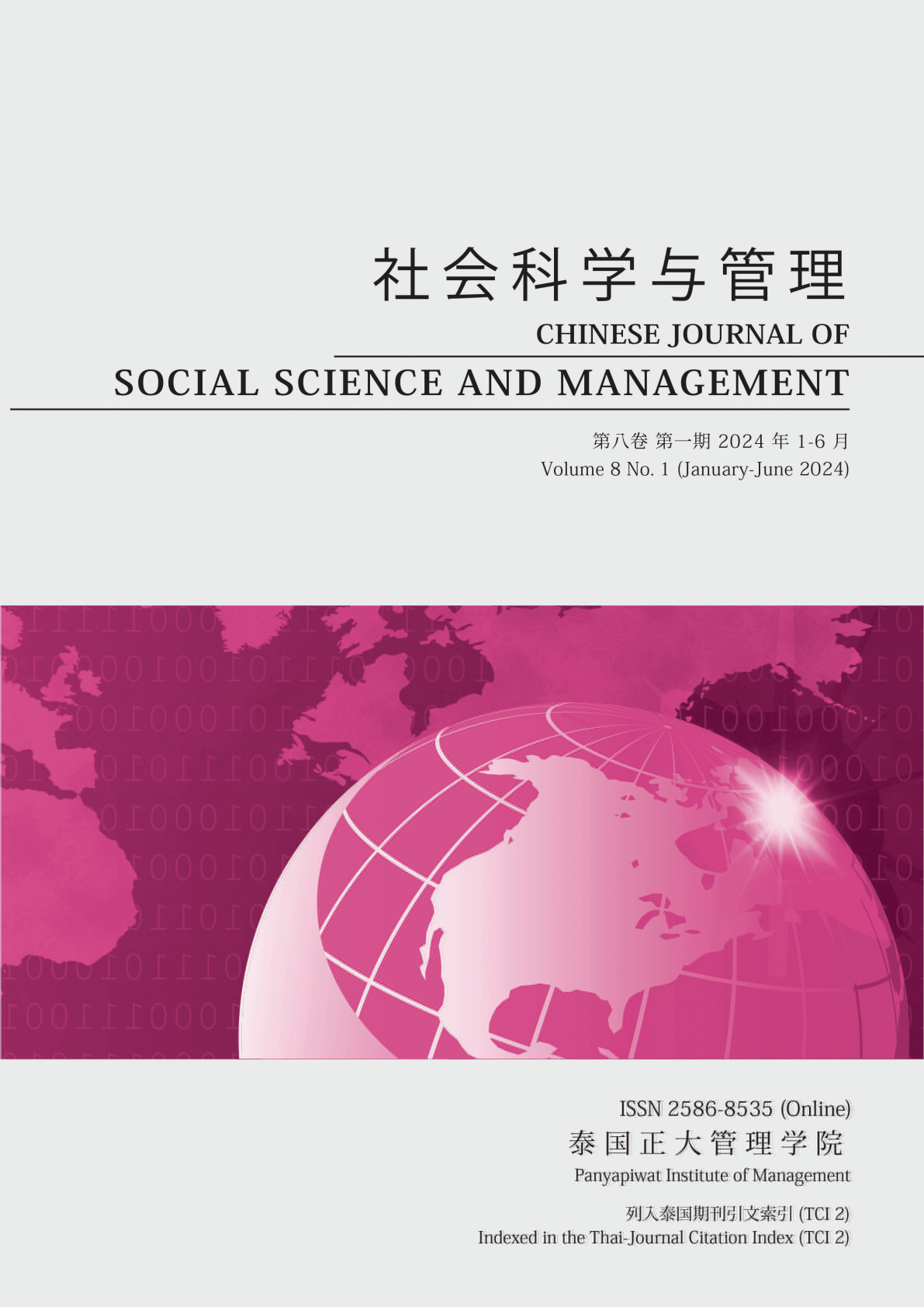THE INFLUENCE OF E-LEADERSHIP ON EMPLOYEE CREATIVITY WITH THRIVING AT WORK AS A MEDIATOR
Main Article Content
Abstract
Under the conditions of the digital era, people’s production and lifestyles are undergoing profound changes with each passing day, and the corresponding organizational forms and leadership processes have also changed. In this study, 627 Chinese employees were selected for a questionnaire survey, and hierarchical regression analysis was used to explore the relationships among E-leadership, thriving at work, and employee creativity. The results show that: 1) E-leadership is positively correlated with employee creativity, 2) E-leadership is positively related to thriving at work, 3) Thriving at work is positively correlated with employee creativity, and 4) Thriving at work mediates between E-leadership and employee creativity. Through the summary of the research results, this study offers a theoretical basis and direction for future research.
Article Details

This work is licensed under a Creative Commons Attribution-NonCommercial-NoDerivatives 4.0 International License.
Chinese Journal of Social Science and Management Editorial Division
The Office of Research and Development, Panyapiwat Institute of Management
85/1 Moo 2, Chaengwattana Rd., Bang Talat, Pakkred, Nonthaburi 11120, Thailand
Tel. 02 855 01048 E-mail: cjssm@pim.ac.th
References
Amabile, T. M., Collins, M. A., Conti, R., Phillips, E., Picariello, M., Ruscio, J., & Whitney, D. (1996). Creativity in context: Update to the social psychology of creativity. Routledge.
Avolio, B. J. (2000). E-leadership: Implications for theory, research, and practice. Leadership Quarterly, 11(4), 615-668.
Avolio, B. J., & Kahai, S. S. (2003). Adding the “e” to e-leadership: How it may impact your leadership. Organizational Dynamics, 31(4), 325-338.
Bandura, A. (1997). Self-efficacy: The exercise of control. W. H. Freeman.
Bergland, A., & Kirkevold, M. (2001). Thriving – A useful theoretical perspective to capture the experience of well-being among frail elderly in nursing homes? Journal of Advanced Nursing, 36(3), 426-432.
Carmeli, A., & Spreitzer, G. M. (2011). Trust, Connectivity, and thriving: Implications for innovative behaviors at wor. Journal of Creative Behavior, 43(3), 169-191.
Cascio, W. F., & Shurygailo, S. (2003). E-leadership and virtual teams. Organizational Dynamics, 31(4), 362- 376.
Chen, W. P. (2015). Comparison of multiple mediating effects of entrepreneurial leadership on employees’ innovation behaviorl. Journal of Technology Economics, (10), 29-33, 41. [in Chinese]
Hamilton, B. A., & Scandura, T. A. (2003). E-mentoring: Implications for organizational learning and development in a wired world. Organizational Dynamics, 31(4), 388-402.
Jackson, L. A., Von Eye, A., Biocca F. A., Barbatsis, G., Fitzgerald, H. E., & Zhao, Y. (2003). Personality and use of the internet’s information and communication tools: Findings from the home NetToo project. Swiss Journal of Psychology, 62(2), 79-90.
Joseph, S., & Linley, P. A. (2008). Trauma, recovery, and growth: Positive psychological perspectives on posttraumatic stress. John Wiley and Sons Inc.
Ju, Y. P. (2021). Digital leadership matrix analysis and promotion path research in the digital age. Leadership Science, (8), 47-50. [in Chinese]
Kahai, S. S. (2012). Leading in a digital age: What’s different, issues raised, and what we know. in Exploring distance in leader-fllower relationships: When near is far and far is near (pp. 63-108). Taylor and Francis.
Li, S. L. (2020). Leading cadres should pay attention to improving the ability of digital governance. Chinese Cadres Tribune, (5), 90-92. [in Chinese]
Pfeffer, J., & Salancik, G. R. (1978). The external control of organizations: A resource dependence perspective. Harper & Row.
Porath, C., Spreitzer, G., Gibson, C., & Garnett, F. G. (2012). Thriving at work: Toward its measurement, construct validation, and theoretical refinement. Journal of Organizational Behavior, 33(2), 250-275.
Roman, A. V., Wart, M. V., Wang, X. H., Liu, C., Kim, S., & Mccarthy, A. (2018). Defining e‐leadership as competence in ict‐mediated communications: An exploratory assessment. Public Administration Review, 79(6), 853-866.
Saakvitne, K. W., Tennen, H., & Affleck, G. (2010). Exploring thriving in the context of clinical trauma theory: Constructivist self-development theory. Journal of Social Issues, 54(2), 279-299.
Sathithada, K., & Niramitchainont, P. (2019). Scenarios of a sustainable E-leadership for Thai Higher Educational Institution Leaders in 2027. Discourse and Communication for Sustainable Education, 10(1), 81-90.
Scott, S. G., & Bruce, R. A. (1994). Determinants of Innovative behavior: A path model of individual in the workplace. Academy of Management Journal, 37(3), 580-607.
Shi, K., Wan, J., & Cui, Y. B. (2015). The generation mechanism of job exuberance based on human-situational interaction China. Human Resources Development of China, (17), 65-72, 83. [in Chinese]
Spreitzer, G., Sutcliffe, K., Dutton, J., & Grant, S. (2005). A socially embedded model of thriving at work. Organization Science, 16(5), 537-549.
Van de Walle, D. (1997). Development and validation of a work dom-ain goal orientation instruct. Educational and Psychological Measurement, 57(6), 995-1015.
Verdery, R. B. (1995). Failure to thrive in the elderly. Clinics in Geriatric Medicine, 11(4), 653-659.
Yudha, H. C. P., & Susanto, T. D. (2019). E-leadership: The effect of e-government success in Indonesia. Journal of Physics: Conference Series, 1201(1), 2025-2029.
Zhang, Y. J., Zhang, J. L., Zhang, Q. F., & Zhang, J. W. (2015). Research on the influence of authoritarian and authorized leadership on employees’ tacit knowledge sharing. Management Review, (9), 130-139. [in Chinese]
Zhou, X., Liu, X. Q., & Zhang, X. F. (2017). Measurement of inclusive leadership and its impact on employees’ job prosperity and creativity. Scientific Management Research, (2), 81-84. [in Chinese]
Zigurs, I. (2003). Leadership in virtual teams: Oxymoron or opportunity? Organizational Dynamics, 31(4), 339-351.


